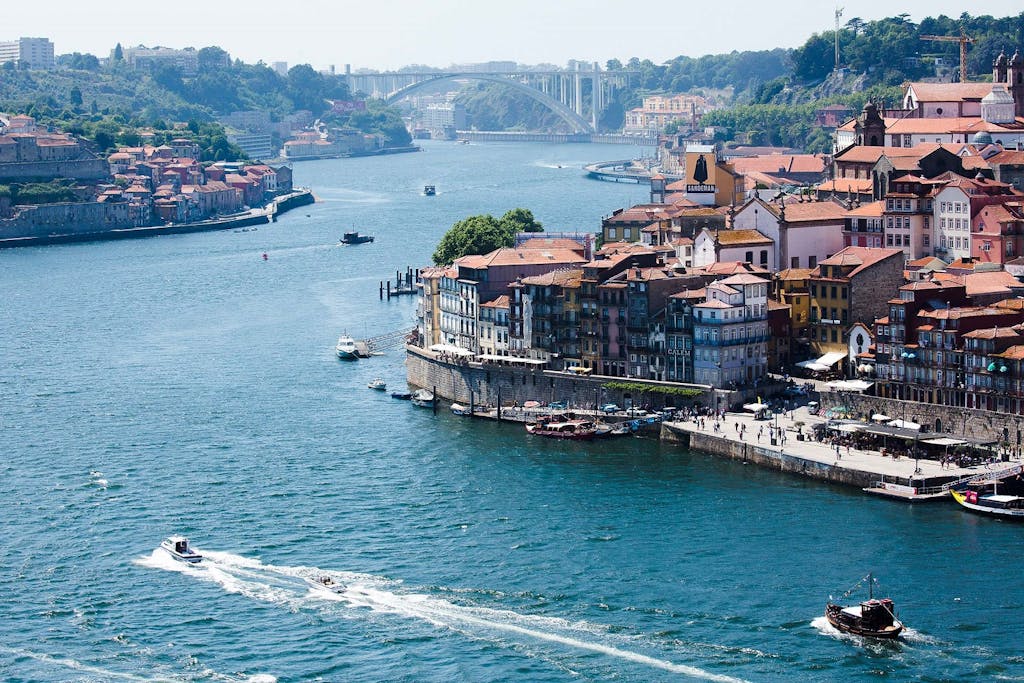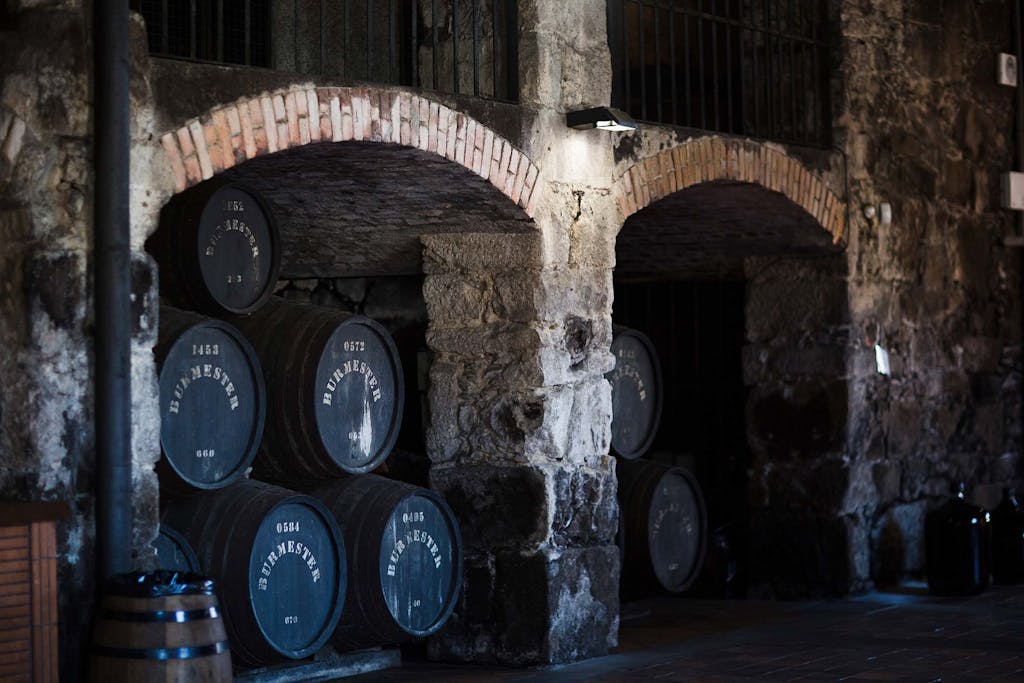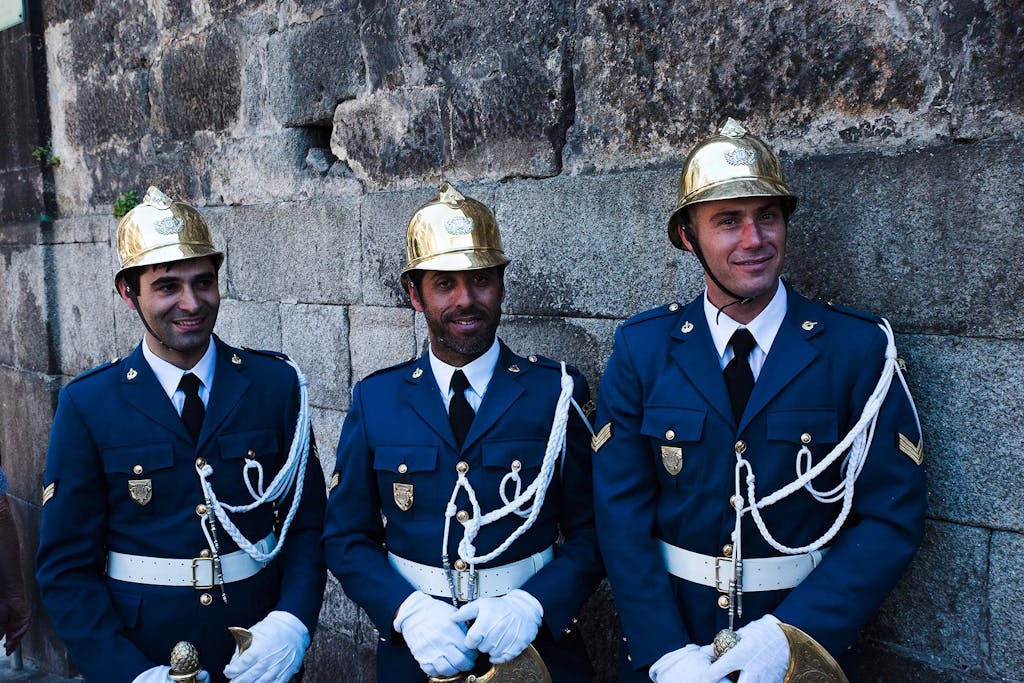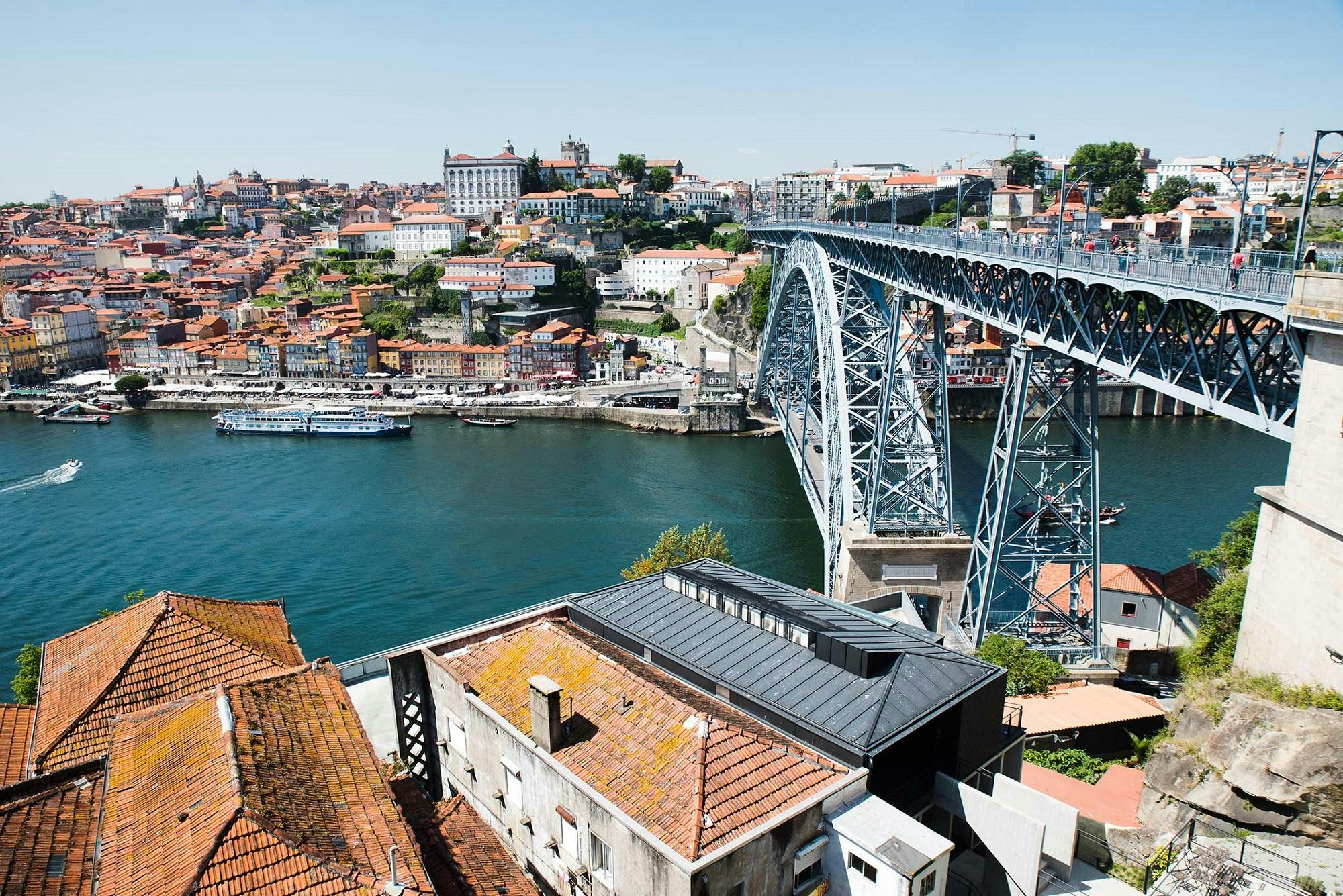Porto Call: A Toast to Portugal’s Coastal Jewel
The warmth of the Portuguese sun emanated from the stone patio, creating a balmy micro-climate beneath the umbrella. Fortunately, refreshing port tonics, Porto’s typical afternoon tipple, flowed from the nearby terrace bar at The George, a restaurant in Vila Nova de Gaia affiliated with the Sandeman brand of the fortified wine, which has made this beautiful Portuguese coastal city world-famous for port wine tasting.
A plate of charred local octopus drizzled with olive oil and sprinkled with fresh parsley arrived. I gazed over the Douro River at Porto, a stately jumble of colorful buildings spilling down the hillside. A decade ago, if you wandered across the river to Vila Nova de Gaia, you must have been heading to a port wine tasting at one of the city’s many port houses. Little else existed there to entice visitors. There were no riverfront bars mixing cocktails inside shipping containers or relaxed cafes serving coffee with custard tarts. Just ask a local: The transformation of Porto and the neighborhood of Vila Nova de Gaia into Portugal’s liveliest food and drink scene has been fast and furious.

Celtic roots and the Roman occupation
While Porto’s historic views offer the perfect backdrop for modern-day discoverers to snap a photo, the city’s history reaches way back before iPhones became a travel essential. Indeed, Portugal’s second-largest city has roots as a Celtic settlement founded at the mouth of the Douro River. The ubiquitous Romans came along in the fourth century, lending the city its enduring name that was the eventual evolution of “Portus Cale.”
By 1143, Portugal achieved independence with first king Afonso Enríquez. In 1386, the Treaty of Windsor established a Portuguese alliance with England, leading to robust trading, including wine. The Age of Discoveries in the 15th century further bolstered Portugal’s wealth and commercial influence. British wine merchants would soon establish businesses in Porto under names still relevant today — think Graham’s, Taylor’s and Warre’s.

The home of port wine
So if you’re wondering exactly where is port wine from, the answer is Porto, Vila Nova de Gaia and the Douro River Valley. Though the Romans grew grapes on steep terraces hugging the Douro, port wine in its modern iteration didn’t come along until the 17th century. Today, it’s a sweet, fortified red wine made from a blend of grapes grown upriver in the Douro Valley. Foot-stomping was the traditional method for crushing grapes. It still is for many of the finest vintage bottles, a port house’s flagship wine in good or “declared” years.
Producers stop fermentation (the conversion of sugar to alcohol) by adding a neutral spirit, typically grape brandy. The spirit is then added mid-fermentation to keep the wine partially sweet. Though most port wine is red, white grapes make youthful and age-worthy expressions while serving the important function as the base of the port tonic. This refreshing concoction of white port, tonic water and an orange slice is enjoyed at practically every bar in town.
Because the valley was remote, port houses built cellars for blending, aging, storing, shipping and the general conduction of commerce in Vila Nova de Gaia, across from Porto. These historic monuments to the living history of port offer tours and port wine tastings to both wine lovers and the port-curious.

Modern Porto retains an Old World feel
Porto’s allure encompasses more than just wine, however. The city has transformed from a dark, sleepy relic into a vibrant destination with art galleries, shopping, cafes and wine bars, while simultaneously boosting the economy. But the well-preserved center, dense with Middle Age architecture, 19th-century palaces and photo-worthy buildings plastered in hand-painted tiles, remains Old World to the core. Compared to popular European cities like Rome and Paris, Porto’s affordability packs excellent value. The cost of living in Portugal is still relatively low. Plus, its compact size makes walking the most popular mode of transport.
Wandering the warren of hilly streets on foot allows for pausing at Porto’s historic sites or stopping in parks like Crystal Palace Gardens to enjoy a break among the topiaries. The ornate Baroque bell tower of Clérigos Tower provides 360-degree views of the city, though at the top of 225 steps. Those in line early to see the Art Nouveau interior of bookstore Livraria Lello will glimpse its famous red staircase.
The best of Porto’s attractions, however, are digestible. Down in the old city district, the neighborhood of Ribeira earned a UNESCO World Heritage nod. When visiting Porto on a cruise, stop for a drink — a port cocktail, of course — at Pestana Vintage Hotel, set within a cluster of historic buildings. Though the northern Portuguese will argue the custard tart called “pastel de nata,” derives from the south, cosmopolitan city dwellers seemingly devour them with abandon. At bakery and cafe Fábrica da Nata, with two locations in town, a few euros purchase one burnished and blistered little pastry with a glass of tawny port. It’s a combination that summarizes in two sweet bites and a heavenly sip, the historic and modern pleasures of Porto.

Port wine tasting in Porto: 5 must-try bottles
Sample the following bottles on port wine tasting tours for an authentic taste of the destination:
- Croft 2011 Vintage Port — Though 2017 was widely declared year, track down older vintages like Croft’s powerful expression from benchmark 2011.
- Wine & Soul 2016 Pintas Vintage Port — Vintage port is arguably the world’s best fine wine value. Pick up this rich and perfumed 2016 for the cellar.
- Sandeman Fine White Port — Recreate port tonic cocktail hour back home with this fresh, youthful bottle showing hints of white peach, pineapple and vanilla.
- Ramos Pinto 20 Year Tawny — Barrel aging lends concentration of dry fruits, nuts and spice to luscious effect by tawny masters Ramos Pinto.
- Quinta do Vallado, Vinha da Coroa 2017 — With its bright red fruits and violets, this new release dry table wine shows the value of cooler vineyard sites in the Douro Valley.

